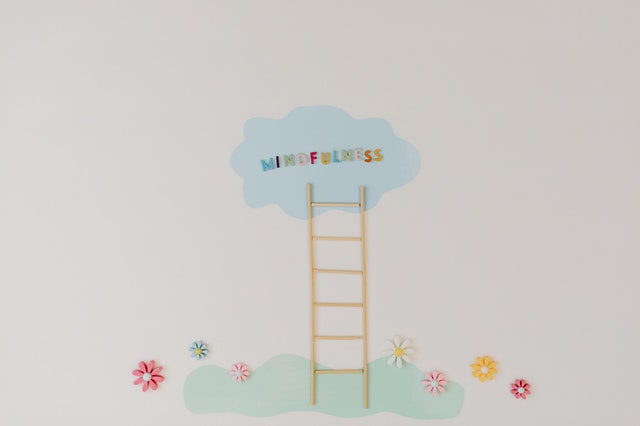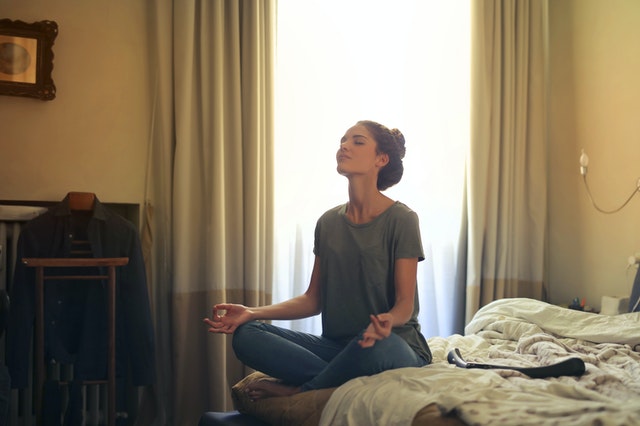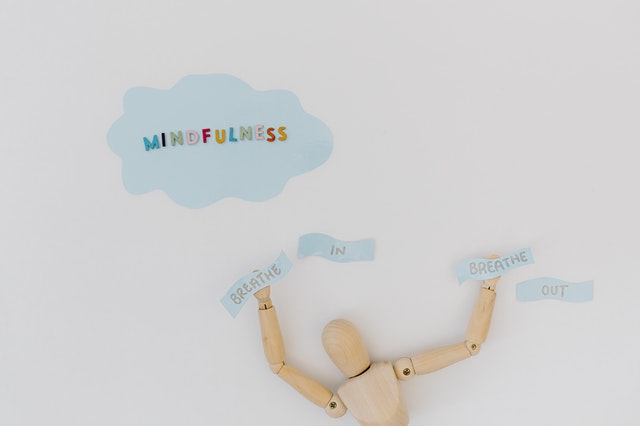Mindfulness isn’t a new concept, but it hasn’t been mainstream in the west in recent years. There are many definitions of it, and each tends to overlap. Mayo Clinic defines it as “a type of meditation in which you focus on being intensely aware of what you’re sensing and feeling in the moment, without interpretation or judgment.” People who practice mindfulness rely on breathing techniques and methods that may involve guided imagery and relaxing postures.
If your household is like many, where everyone in the family experiences some degree of stress, you can all benefit by learning how mindfulness can reduce physical and mental stress. Once you know how to practice being mindful and experience its benefits, you can use it as a positive coping method to deal with stress and protect your wellbeing and mental health.
Why Is Mindfulness Important?

Mindfulness is a concept that has its roots in ancient Indian traditions associated with Hinduism and Buddhism. As these religions traveled west and have become increasingly popular, so too has the practice of mindfulness. Perhaps the concept’s best ambassador has been yoga. Yoga, which also comes from ancient Indian practices, has helped to popularize the practice of mindfulness even among non-secular practitioners. While some people continue to associate the practice with their spiritual beliefs, others simply practice being mindful without the spiritual underpinnings.
Yoga can be a great vehicle for practicing mindfulness because both concepts instruct practitioners to be keenly aware of their bodies. Embracing mindfulness and incorporating Feng Shui principles into your home creates a harmonious sanctuary, fostering balance and tranquility in both mind and environment. However, there are other ways to engage in mindfulness that we’ll explore here.
What Are the Benefits of Mindfulness?

While it’s widely accepted that mindfulness can reduce stress, the practice is showing up in all sorts of medical research and studies as Western scientists begin to unravel why and how it seems to benefit mental and physical health. Of course, we cannot say that if you practice mindfulness, X, Y, and Z will happen, but according to the anecdotal evidence and some medical evidence, you may expect some definite mental and physical health advantages.
Mindfulness for Stress Reduction
As we mentioned, mindfulness may help you reduce stress. Why is it important to reduce stress? Well, chronic stress is linked to the development of mental health disorders such as anxiety, depression, and even substance addiction. It’s also linked to physical health problems such as high blood pressure and obesity. Think about your own life and your family. How does stress manifest in your home? Some people rely on exercise to cope with stress. Practicing mindfulness is just another way to cope with everyday stressors.
Improve Mental Focus
According to Mayo Clinic, mindfulness may help to sharpen your mental focus. The techniques associated with the practice force practitioners to focus on their senses or breathing. It’s not always easy to eliminate the competing thoughts in one’s mind or block out all the stimuli from one’s surroundings. However, by practicing mindfulness, people can finely tune their focus. They can be a terrific benefit for students or career professionals.
Get Better Sleep
Stress tends to impede our sleep. Poor sleep quality is linked to physical and mental health issues. When you learn how to cultivate mindfulness, through meditation and visualization, you can more easily and effectively clear your mind at bedtime to rest easier. Stress keeps many people tossing and turning. Insomnia can turn into a full-blown sleep problem that may even require medication. Doctors may prescribe mindfulness before they prescribe sleep medications because it can effectively promote good sleep.
Mindfulness and Your Family

In today’s households, each member is likely going in a different direction. Adults are going to their various jobs. Each child is heading to school and coping with the challenges associated with their different grade levels. Work meetings, extracurricular activities, social engagements–all these extras add up to many stimuli for the mind. While some of it is good, some of it can also stress individuals and the family as a whole.
To improve your family’s ability to reconnect, recharge, and reduce stress, you can practice mindfulness together or individually. This is important because it helps everyone create and benefit from their home’s sanctuary-like atmosphere. Mindfulness can benefit adults as well as adolescents and younger children. But how?
Mindfulness and Adults
We’ve discussed some of that mindfulness offers to any practitioners, but let’s consider it through the lens of an adult for a moment. Adults necessarily have different cares and stressors than kids. Of course, they also have greater responsibilities for themselves and other family members (i.e., children and possibly even their aging parents).
What do you find yourself worrying about when you cook dinner? Eating dinner? What about when you’re sitting in front of the television with your family? Where is your mind? Is it still at work? On financial problems? Are you daydreaming? These are all perfectly valid things that we focus on, but they can take over. When they’re negative and impede our home time, they can prevent us from living in the present moment.
In the present moment, we could be enjoying what our children have to say about school or perfecting a new recipe. Those present positive moments and experiences are therapeutic; they actually give your brain and body much-needed rest from stressors and can calm your anxious mind.
Mindfulness for Children and Teens
Kids and teens may not have to contend with an angry boss or bills, but they definitely face stressors, and some kids face problems that are far too adult in nature simply because of life circumstances. There are many mindfulness activities for kids out there. How can mindfulness benefit them?
Teaching kids mindfulness puts them on a healthy track for coping with stress positively throughout their lives. Sometimes adults don’t discover mindfulness until they’ve spent years dealing with stress and anxiety in unhealthy ways–drinking, overeating, or burying it within themselves. These harmful coping methods can sabotage physical and mental health.
When kids are taught mindfulness, they may be able to avoid those unhealthy pitfalls because they’ve learned an effective way of coping with their stressors. Mindfulness helps people manage their emotions and emotional responses better. That’s not easy for adults to do, and it certainly isn’t easy for kids. Still, when they do, they will find that they are able to handle challenges better, make better decisions, and suffer less emotional fallout that often occurs when life gets rough.
Mindfulness Techniques

Fortunately, there are different methods for practicing mindfulness. You may find that one is more enjoyable for you or other members of your family than other methods. Try different activities so that you can see what you find most beneficial.
Breathing Techniques
Focusing on your breathing for about 5-10 minutes is a great place to start your mindfulness experience. Sit down in a calm space and focus only on inhaling and exhaling. As you focus on your breathing, let your thoughts slide away. Don’t give in to thinking about them. Your active mind should be focused on your breathing. Kids might find going longer than five minutes difficult, so begin there. In time, you may be able to reach that 10-minute goal.
Mindful Seeing
Mindful seeing forces you to take in all the images within your field of vision. Sit and look out of your window. In this exercise, you’re cultivating mindfulness in your sense of sight. Note their contours, shapes, and textures as you look at objects. Focus on their elements. By training your mind not to wander to other thoughts, past or present, you can live in the moment, shedding stressors as your eyes take in what’s in front of them.to
Five Senses Exercise
Another way to cultivate mindfulness at home is to practice the five senses exercise. Rather than just focusing on one sense like mindful seeing, you’ll incorporate each of your senses into the practice. Because the exercise involves counting, it’s a great tool to use with kids. To practice it, do the following:
- Notice five images and look at them closely. Try to choose things that you don’t typically pay attention to. They could be a backyard birdhouse, a broken branch, a puddle in the street, and so forth.
- Next, focus on four things that you can feel. These could be the texture of your clothing, the softness of your hand on a tablecloth, or even the breeze coming in through the window.
- Next, focus on three things that you are able to hear. These might be the hum of the refrigerator, cars passing along your street, or the rain as it hits your rooftop.
- Now, focus on two things that you can smell. Perhaps there’s food cooking in the kitchen. Perhaps there’s a scent coming from a candle.
- Lastly, focus on one thing to taste. Take a sip of lemon water. Place a chocolate morsel in your mouth.
By mindfully engaging each sense separately, you cultivate your mindfulness–and ability to reduce your stress.
Additional Ideas
It is possible to introduce other techniques too. You might create a zen garden where you can practice your breathing techniques or introduce music to your five senses experience. Some people practice their guided imagery experiences while walking. You can also consider practicing mindful eating to be more aware of your eating habits or try mindfulness books for kids. Take time to practice some different techniques to see what works best for you and your family.
The world can be chaotic, but you can create a calm mind and relaxed body when you develop daily habits for practicing mindfulness. Once you do, you can cope better with stress and tackle problems from a place of calm instead of one of emotional upheaval. Use the tips outlined here to get started. Be sure to acquaint everyone in your household with the benefits of mindfulness, and then get started.




